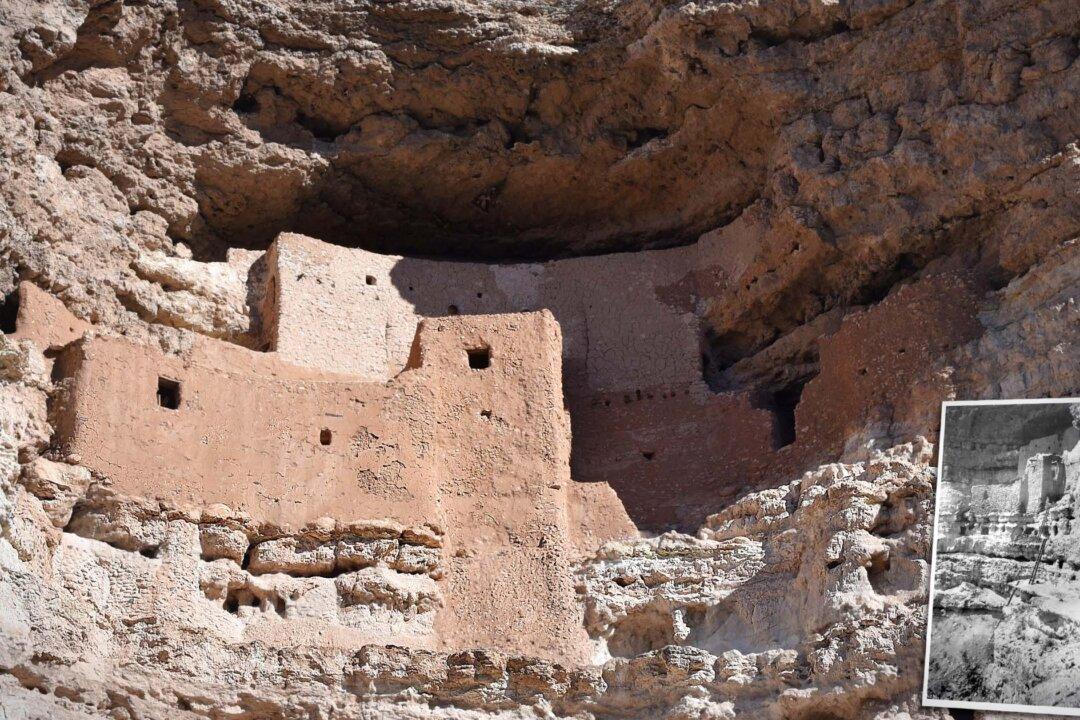Built inside a cliffside alcove ninety feet off an Arizona valley floor, an ancient American “castle” remained a mystery to settlers in the area for decades until historians discovered the unique structure had a much older, richer history than originally thought.
When settlers and Mexican-American War veterans came to Verde Valley in the 1840s, they mistakenly assumed that the pre-Columbian fortress, nestled in the limestone embankment of Beaver Creek Canyon along what is now the I-17 between Phoenix and Flagstaff, was built by the Aztecs. They named it Montezuma Castle, after the 16th century Aztec Emperor Montezuma II.





